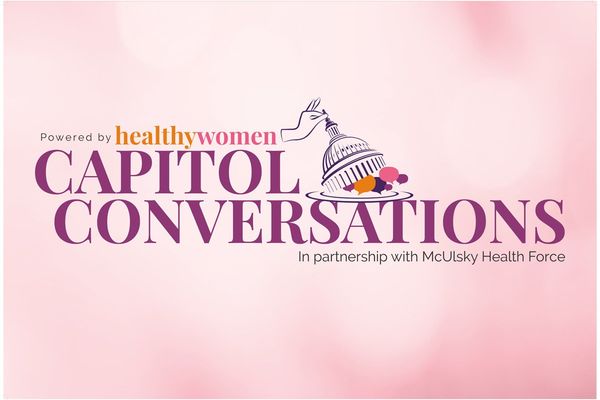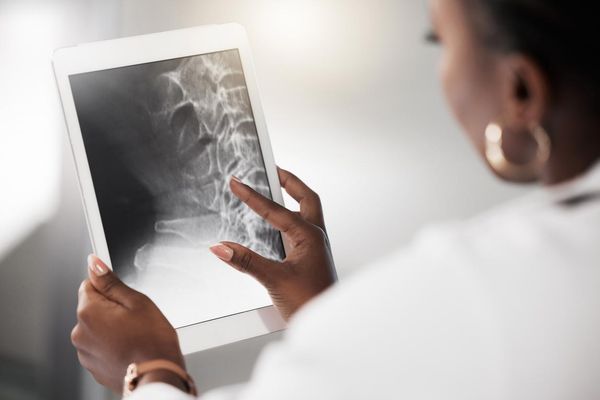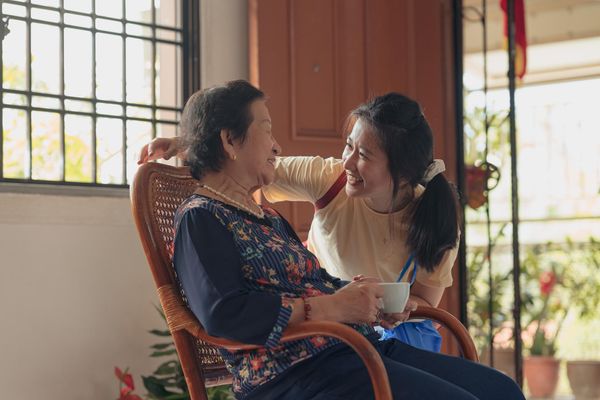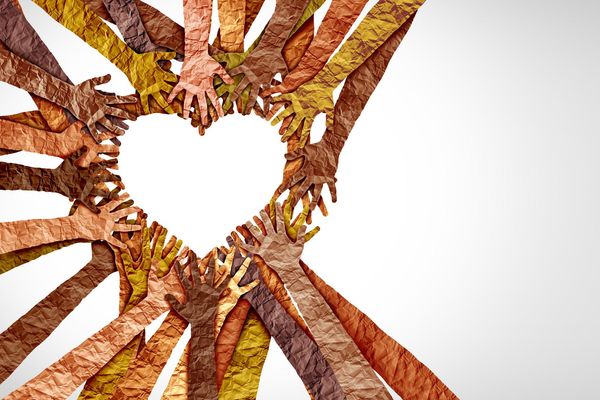This toolkit is intended to help state legislators (and others) interested in addressing the opioid epidemic in the U.S. The toolkit was jointly developed by HealthyWomen and the Legal Action Center and is partially based upon a presentation we made at a Women in Government Conference in June 2018.
The opioid epidemic has many components and causes. To address it requires multiple approaches and collaborations. Each region, state and community must consider its own situation in developing and implementing plans and actions. This tool kit is intended to support these efforts; the tool kit is organized into the following sections:
Dispelling Stigma
Access to Treatment
Affordability
Data to Focus Efforts
Collaborations
Ensuring Adequate Pain Management
Resources
For perspectives on the opioid epidemic from HealthyWomen and the Legal Action Center, these links offer a broad range of information:
HealthyWomen’s Policy Center page about Opioids Use Disorder & Treatment
For more information or to add resources, contact us: policy@HealthyWomen.org
Dispelling Stigma
Dispelling the stigma of opioid use disorder (OUD) is a primary action for confronting a community’s problems arising from the opioid epidemic. Understanding and communicating that OUD is a medical condition, like diabetes or depression, is a first step towards comprehensive and integrated solutions that include medical, social and legal components. Such integrated approaches can lead to real progress for individuals, families and communities. Like most diseases, OUD affects all populations and communities. Its wide impact must also be recognized as part of the process of dispelling the stigma and misconceptions about OUD.
Confront the stigma and misconceptions of OUD:
- Refer to OUD as a medical condition or disease rather than casting it as any type of personal or moral failing or weakness. (Telling stories about different individuals and how they experienced OUD can help make that point.)
- Avoid the terms “addict” or “addiction.”
- Compare OUD to other diseases such as diabetes, depression or arthritis – all of which are biological conditions that can be treated medically, as can OUD.
Resources to help dispel the stigma of OUD:
- Legal Action Center: Myths & Facts about MAT
- Seven myths about Medication Assisted Treatment (MAT) for Opioid Use Disorder (OUD) – National Behavioral Council
- “Drugs, Brains, and Behavior: The Science of Addiction” National Institute of Drug Abuse [Editorial Note: The terms addiction and abuse are no longer favored, rather the term opioid abuse disorder is the preferred phrase.]
- “Confronting the Stigma of Opioid Use Disorder—and Its Treatment,” JAMA, April 9, 2014.
- “The Burden of Opioid-Related Mortality in the United States,” JAMA, June 1, 2018.
- “Where have all the workers gone? An inquiry into the decline of the U.S. labor force participation rate,” Brookings, September 7, 2017.
Access to Treatment
Access to Treatment for OUD is a major barrier in many communities. Lack of access to treatment for OUD leaves people and communities with fewer opportunities for preventing or overcoming the impact of OUD, such as:
- Infection with diseases such as HIV or hepatitis C and death
- Workforce and economic problems because people who cannot get treated for OUD may not be able to find or hold jobs
- Strains on local law enforcement, first responders, and emergency clinical services.
Expanding access to treatment often is a primary goal for many communities. Doing so requires recognizing that there are successful treatment options for OUD that enables people to work and live normal lives while managing their OUD.
Increasing access to OUD treatment include:
- Working to reduce barriers for clinicians to provide medication assisted treatment (MAT) by removing regulations that limit the number of patients they serve, promoting care coordination models such as “hub and spoke” and other actions that make it easier for patients to see qualified clinicians and for those clinicians to treat more patients.
- Increasing reimbursement for clinicians to provide treatment for OUD.
- Expanding funding for public health access points for MAT.
- Enforcing existing laws and regulations that require treatment parity between mental health and substance use disorders and other chronic illnesses.
- Promoting coordination across government and private sector groups involved in health care, public health, first responders and the judicial system Treatment for OUD is more effective and less expensive than incarceration, e.g., $4,000 versus $23,000 per year according to a 2011 study.
Resources to help explain the value of treatment for OUD and how to increase access:
- Video: MAT treatment Reconnects Women to their Families and Communities
- “What’s MAT Got to Do with It? Medication-Assisted Treatment for Opioid Use Disorder in Rural America” Rural Health Information Hub, March 21 2018
- “Medication-Assisted Treatment Improves Outcomes for Patients with Opioid Use Disorder,” Pew, November 2016.
- “A Tide of Opioid-Dependent Newborns Forces Doctors to Rethink Treatment,” New York Times, July 13, 2017.
- LAC Report “Legality of Denying Access to Medication Assisted Treatment in the Criminal Justice System” 2011
- MAT in Drug Courts
- Model Legislation to Ensure Access to Medication Assisted Treatment
- American Society of Addiction Medicine Parity Toolkit
- Medication-Assisted Treatment of Opioid Use Disorder: SAMHSA
- “Treatment of Opioid-Use Disorders,” New England Journal of Medicine, July, 2016
- Telemedicine and Opioid Use Disorder
Affordability
Affordability can also be a major OUD treatment barrier for patients. As with other serious medical problems like diabetes and depression, high co-payments or deductibles can create financial hurdles preventing people from getting treatment for their OUD, which means they are essentially denied treatment.
Addressing affordability barriers for people with OUD includes:
- Ensuring the state’s Medicaid program and the health insurance for state employees covers OUD treatments with minimal cost-sharing.
- Implementing state laws that require all insurance – including short-term health plans – to cover treatments for OUD, and for that insurance to have parity in coverage and affordability with treatments for other conditions.
- Confronting the stigma of OUD to support individuals to seek treatment and encourage employers to hire people with OUD who are in treatment.
- Promoting cooperation and programmatic alignment among corrections and addiction treatment providers to improve health outcomes and reduce costs.
Resources to improve affordability of treatment for OUD:
- SAMHSA National Helpline - 1-800-662-HELP (4357) https://www.samhsa.gov/find-help/national-helpline
- “Medicaid Coverage of Effective Treatment for Opioid Use Disorder,” Urban Institute, June 2017. https://www.urban.org/sites/default/files/publication/90461/2001287_medicaid_coverage_of_effective_treatment_for_opioid_use_disorder.pdf
Data to Focus Efforts
Data to Focus Efforts is Essential. Data helps focus and guide the deployment of resources for treatment programs, public health and first responders – particularly related to outbreaks of new and potentially deadly forms of opioids such as illegal fentanyl. Data is also important for determining if treatment programs and other initiatives are effective and producing the desired outcomes.
Addressing how to improve the availability and use of data includes:
- More robust use of Prescription Drug Monitoring Programs (PDMPs). (The specific actions will depend upon existing state laws and regulations related to PDMPs)
- Legislators should use data on opioid misuse and overdoses to inform funding priorities and other decision making.
- Consistent data reporting should be encouraged by medical examiners, hospitals, and first responders. Data should be rapidly collected and analyzed to enable public health and others to respond appropriately to the opioid epidemic in each community.
Resources for developing and using data to address opioid problems in a community:
- FAQs about Prescription Drug Monitoring Programs (PDMPs) https://www.pdmpassist.org/content/prescription-drug-monitoring-frequently-asked-questions-faq.
- “Six Strategies for Reducing Prescription Drug Abuse,” National Governors Association, 2012 https://classic.nga.org/cms/home/nga-center-for-best-practices/center-publications/page-hsps-publications/six-strategies-for-reducing-pres.html
Collaborations
Collaborations among government agencies and private organizations is important for comprehensive community and regional responses to the opioid epidemic.
Areas for improving collaboration and coordination related to OUD include:
- Coordinate PDMPs
- State legislators can work with their governors and Federal colleagues to support efforts to stop the influx of illegal opioids. The influx of illegal opioids into the U.S. from other countries is exacerbating our opioid epidemic, with the crisis now being driven in many places by heroin, fentanyl and other opioids manufactured in other countries and shipped into the U.S. These illegal opioids can be made into pills that looks like legitimate prescription medicines but may be much more potent and thus more dangerous.
- Legislators also can work with their colleagues in adjacent states or their region to coordinate and support their data collection and analysis efforts by linking to PDMPs. Coordination or linking of PDMPs enables physicians and pharmacists to check if a patient has recently received an opioid prescription from another physician or pharmacy. States can also review or revise the requirements for how clinicians and pharmacies use PDMPs before writing a prescription for an opioid or dispensing the medicine to the patient.
Resources about collaborating on improving access to treatment, affordability, data and other avenues for coordinating programs to support better treatment for OUD and responses to the opioid epidemic:
- “Preventing Opioid Misuse: Legislative Trends and Predictions,” NCSL Blog, January 31, 2017. https://www.ncsl.org/blog/2017/01/31/preventing-opioid-misuse-legislative-trends-and-predictions.aspx
- “Prescribing Policies: States Confront Opioid Overdose Epidemic,” NCSL, April 5, 2018. https://www.ncsl.org/research/health/prescribing-policies-states-confront-opioid-overdose-epidemic.aspx
- “Governors’ Recommendations for Federal Action to End the Nation’s Opioid Crisis,” NGA, January 2018. https://classic.nga.org/files/live/sites/NGA/files/pdf/2018/OGR/NGA%20Recommendations%20for%20Federal%20Action%202018.pdf
Ensuring Adequate Pain Management
Ensuring adequate pain management for patients (for individuals with and without OUD), needs considered, since well-intentioned approaches to the opioid epidemic may restrict access to prescription opioids. These unintended restrictions could leave people with terminal illnesses (such as cancer), and those with chronic pain conditions, without proper pain management. Part of the solution for these individuals is promoting better integrated and multi-modal pain management approaches that both utilizes opioid medicines (when appropriate). Treatments that have been shown to be successful, such as cognitive behavioral therapy (CBT), physical therapy, acupuncture and other non-pharmacological treatment, must also be considered.
Exploring how to ensure access to adequate pain treatments is beyond the scope of this toolkit, but links to some resources are provided below, and community leaders should consult with their local experts as they develop plans and implement initiatives to address the opioid epidemic.
Resources about ensuring adequate pain treatments include:
- “Responses to the Opioid Crisis Must Account for People Who Experience Chronic Pain,” Center for American Progress, June 14, 2018. https://www.americanprogress.org/issues/poverty/news/2018/06/14/452173/responses-opioid-crisis-must-account-people-experience-chronic-pain/
- “Women and opioids: something different is happening here,” Lancet July 7, 2018. https://www.thelancet.com/journals/lancet/article/PIIS0140-6736(18)31203-0/fulltext
- CDC Guideline for Prescribing Opioids for Chronic Pain
- U.S. Pain Society: Advocacy
- International Association for the Study of Pain: Pain in Women
- “Women and pain: Disparities in experience and treatment” (Harvard Health Blog, October 2017)
- “Why Women Feel Chronic Pain More Than Men” (Pain News Network March 2017)
- The Joint Commission: Pain Management
Additional Resources
Additional resources and background information for community and legislative leaders to combat the opioid epidemic and improve treatment for OUD include:
- American Society of Addiction Medicine: Access to Opioid Addiction Medications Toolkit
- Coalition to Stop Opioid Overdose
- “Suggested Paths to Fixing the Opioid Crisis - Directions and Misdirections,” Journal of the American Medical Association, June 1, 2018. https://jamanetwork.com/journals/jamanetworkopen/fullarticle/2682874
- “The Opioid Crisis From Research to Practice,” Milbank Quarterly, March 2017. https://www.milbank.org/quarterly/articles/opioid-crisis-research-practice/







